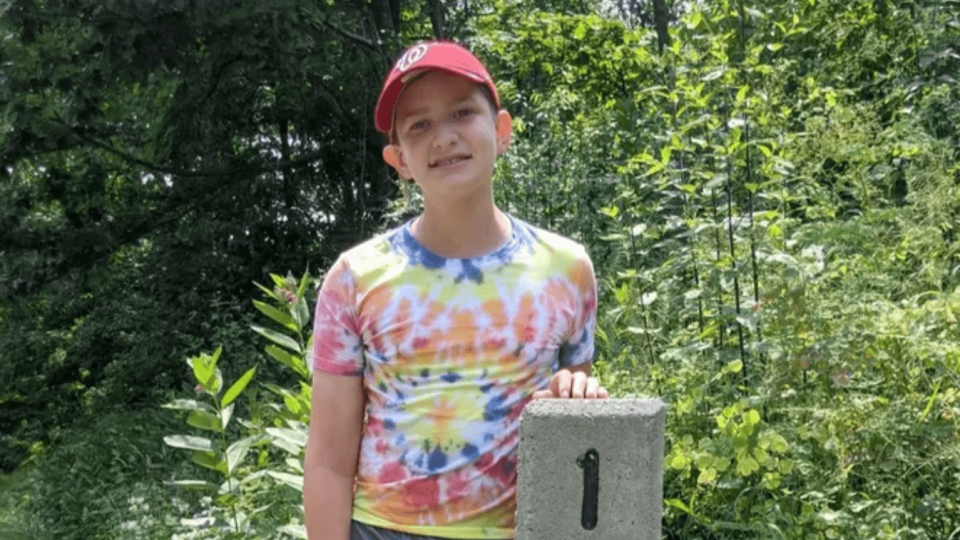Florida Teen Flown to Chicago to Rehabilitate from Brain-Eating Amoeba: 'Long Road Ahead of Him'
It's been more than two months since a Florida teen was hospitalized and began recovering from Naegleria fowleri, or brain-eating amoeba.
After contracting the rare infection in July, Caleb Ziegelbauer, 13, has been fighting for his life at Golisano Children's Hospital, his family said in a GoFundMe post.
Caleb's loved ones have been documenting his rough journey in the hospital, where he's experienced a seizure and requiring intubation in the ICU, among other ailments. However, his health started to show slow progress on Aug. 17 and Caleb entered a "stable" state and medical staff reported positive changes.
"Thirty-nine days ago, when Jesse and Eric brought Caleb to the ER and doctors were beginning to realize it was the very worst case scenario possible, they told them they had 4 days left with their son. Tops. Four days. And today, they started to talk discharge from the hospital," Caleb's aunt, Katie Chiet, wrote in an update online last month. "After 39 days, he's stable enough to start talking about what comes next, and that's an incredible testament to his parents who have poured love over him and the incredible medical team at Golisano Children's Hospital of Southwest Florida."
Now, Caleb has been transferred to Shirley Ryan AbilityLab, a rehabilitation facility in Chicago, to continue his recovery. His family has thanked those who have donated to his recovery on their GoFundMe account, which has raised nearly $72,400.
RELATED: Brain-Eating Amoeba: What You Need to Know This Summer

GoFundMe
Never miss a story — sign up for PEOPLE's free daily newsletter to stay up-to-date on the best of what PEOPLE has to offer, from juicy celebrity news to compelling human interest stories.
Naegleria fowleri, commonly referred to as brain-eating amoeba, is a single-celled living organism that can cause a rare and almost always fatal infection of the brain called primary amebic meningoencephalitis (PAM). According to a CDC report, only four people in the U.S. out of 151 from 1962 until 2020 have survived the infection.
Caleb's family revealed that he's been working with occupational therapists, physical therapists, and speech therapists while in Chicago.
"So far, Caleb has been working with his therapists on sitting balance and finding his own balance point again, cervical stacking to regain head and neck control, working on swallowing safely with his speech therapy team, and feeling what is like to weight bear again in a tilt table," Chiet wrote in a Sept. 6 update.
"He's been awake for longer periods of the day and we're watching his eyes work to begin tracking objects. He started working with cardiopulmonary PT to improve his breathing and to decrease the work of his accessory muscles - we need him to use those muscles less and his big breathing muscles more," she continued. "We're enjoying watching all the inchstones, knowing that tiny progress all adds up! He's got a long road ahead of him and we know he's in the absolute right place for this part of the journey."
RELATED VIDEO: 19-Year-Old New Yorker Dead from Brain-Eating Amoeba
RELATED: Florida Teen Hospitalized Due to Brain-Eating Amoeba Following Family Beach Trip
Caleb was first infected with the brain-eating amoeba on July 1 while swimming at Port Charlotte Beach with his family. One week later, he started experiencing a fever, headaches and hallucinations. His family rushed him to the emergency room where doctors confirmed that a brain-eating amoeba had entered his body.
Brain-eating amoeba is most commonly found in warm fresh waters such as lakes, rivers and hot springs. It also resides in poorly maintained or minimally chlorinated swimming pools, staying in these habitats to feed on bacteria.
Symptoms of brain-eating amoeba generally start one to nine days after nasal exposure and many people die within 18 days of showing symptoms, according to the CDC. These include severe headaches, fever, nausea and vomiting in the first stage and stiff neck, seizures, altered mental status, hallucinations and a coma in the second stage. PAM, the infection caused from the amoeba, is ultimately hard to detect though, because of the rapid progression of the disease. Diagnosis is typically made postmortem.
Although infection is rare (there are less than 8 infections per year), there is currently no way to reduce the number of amoebas in water. On its website, the CDC says it is "unclear how a standard might be set to protect human health and how public health officials would measure and enforce such a standard."
The only guaranteed way to avoid brain-eating amoeba infections is to refrain from participating in water-related activities in warm freshwater. "Anyone that enjoys time in a body of water should cover their nose before they go in or use nose clips," Mirna Chamorro, Florida Department of Health in Orange County spokeswoman, previously told PEOPLE. "As long as they don't put their head under water, they are okay."

